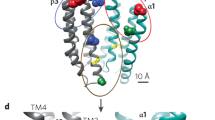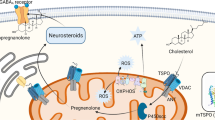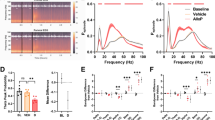Abstract
Acute sleep deprivation (SD) can trigger or exacerbate psychosis- and mania-related symptoms; the neurobiological basis of these complications, however, remains elusive. Given the extensive involvement of neuroactive steroids in psychopathology, we hypothesized that the behavioral complications of SD may be contributed by 5α-reductase (5αR), the rate-limiting enzyme in the conversion of progesterone into the neurosteroid allopregnanolone. We first tested whether rats exposed to SD may exhibit brain-regional alterations in 5αR isoenzymes and neuroactive steroid levels; then, we assessed whether the behavioral and neuroendocrine alterations induced by SD may be differentially modulated by the administration of the 5αR inhibitor finasteride, as well as progesterone and allopregnanolone. SD selectively enhanced 5αR expression and activity, as well as AP levels, in the prefrontal cortex; furthermore, finasteride (10–100 mg/kg, IP) dose-dependently ameliorated PPI deficits, hyperactivity, and risk-taking behaviors, in a fashion akin to the antipsychotic haloperidol and the mood stabilizer lithium carbonate. Finally, PPI deficits were exacerbated by allopregnanolone (10 mg/kg, IP) and attenuated by progesterone (30 mg/kg, IP) in SD-subjected, but not control rats. Collectively, these results provide the first-ever evidence that 5αR mediates a number of psychosis- and mania-like complications of SD through imbalances in cortical levels of neuroactive steroids.
Similar content being viewed by others
Log in or create a free account to read this content
Gain free access to this article, as well as selected content from this journal and more on nature.com
or
References
Acosta-Peña E, Camacho-Abrego I, Melgarejo-Gutiérrez M, Flores G, Drucker-Colín R, García-García F (2015). Sleep deprivation induces differential morphological changes in the hippocampus and prefrontal cortex in young and old rats. Synapse 69: 15–25.
Bauer M, Grof P, Rasgon N, Bschor T, Glenn T, Whybrow PC (2006). Temporal relation between sleep and mood in patients with bipolar disorder. Bipolar Disord 8: 160–167.
Belelli D, Lambert JJ (2005). Neurosteroids: endogenous regulators of the GABA(A)receptor. Nat Rev Neurosci 6: 565–575.
Benca RM, Obermeyer WH, Thisted RA, Gillin JC (1992). Sleep and psychiatric disorders. A meta-analysis. Arch Gen Psychiatry 49: 651–668.
Bitsios P, Giakoumaki SG (2005). Relationship of prepulse inhibition of the startle reflex to attentional and executive mechanisms in man. Int J Psychophysiol 55: 229–241.
Bortolato M, Cannas A, Solla P, Bini V, Puligheddu M, Marrosu F (2012). Finasteride attenuates pathological gambling in patients with Parkinson disease. J Clin Psychopharmacol 32: 424–425.
Bortolato M, Devoto P, Roncada P, Frau R, Flore G, Saba P et al (2011). Isolation rearing-induced reduction of brain 5α-reductase expression: relevance to dopaminergic impairments. Neuropharmacology 60: 1301–1308.
Bortolato M, Frau R, Aru GN, Orrù M, Gessa GL (2004). Baclofen reverses the reduction in prepulse inhibition of the acoustic startle response induced by dizocilpine, but not by apomorphine. Psychopharmacology 171: 322–330.
Bortolato M, Frau R, Orrù M, Bourov Y, Marrosu F, Mereu G et al (2008). Antipsychotic-like properties of 5-alpha-reductase inhibitors. Neuropsychopharmacology 33: 3146–3156.
Bortolato M, Frau R, Piras AP, Luesu W, Bini V, Diaz G et al (2009b). Methamphetamine induces long-term alterations in reactivity to environmental stimuli: correlation with dopaminergic and serotonergic toxicity. Neurotox Res 15: 232–245.
Bortolato M, Godar SC, Davarian S, Chen K, Shih JC (2009a). Behavioral disinhibition and reduced anxiety-like behaviors in monoamine oxidase B-deficient mice. Neuropsychopharmacology 34: 2746–2757.
Braff DL, Geyer MA, Swerdlow NR (2001). Human studies of prepulse inhibition of startle: normal subjects, patient groups, and pharmacological studies. Psychopharmacology 156: 234–258.
Bubser M, Koch M (1994). Prepulse inhibition of the acoustic startle response of rats is reduced by 6-hydroxydopamine lesions of the medial prefrontal cortex. Psychopharmacology 113: 487–492.
Caruso D, Scurati S, Maschi O, De Angelis L, Roglio I, Giatti S et al (2008). Evaluation of neuroactive steroid levels by liquid chromatography-tandem mass spectrometry in central and peripheral nervous system: effect of diabetes. Neurochem Int 52: 560–568.
Castelli MP, Casti A, Casu A, Frau R, Bortolato M, Spiga S et al (2013). Regional distribution of 5α-reductase type 2 in the adult rat brain: an immunohistochemical analysis. Psychoneuroendocrinology 38: 281–293.
Cohrs S, Rasch T, Altmeyer S, Kinkelbur J, Kostanecka T, Rothenberger A et al (2001). Decreased sleep quality and increased sleep related movements in patients with Tourette's syndrome. J Neurol Neurosurg Psychiatry 70: 192–197.
Cooke PS, Nanjappa MK, Yang Z, Wang KK (2013). Therapeutic effects of progesterone and its metabolites in traumatic brain injury may involve non-classical signaling mechanisms. Front Neurosci 7: 108.
Daviaux Y, Mignardot JB, Cornu C, Deschamps T (2014). Effects of total sleep deprivation on the perception of action capabilities. Exp Brain Res 232: 2243–2253.
Devoto P, Frau R, Bini V, Pillolla G, Saba P, Flore G et al (2012). Inhibition of 5α-reductase in the nucleus accumbens counters sensorimotor gating deficits induced by dopaminergic activation. Psychoneuroendocrinology 37: 1630–1645.
Dubrovsky BO (2005). Steroids, neuroactive steroids and neurosteroids in psychopathology. Prog Neuropsychopharmacol Biol Psychiatry 29: 169–192.
Durmer JS, Dinges DF (2005). Neurocognitive consequences of sleep deprivation. Semin Neurol 25: 117–129.
Fadda P, Fratta W (1997). Stress-induced sleep deprivation modifies corticotropin releasing factor (CRF) levels and CRF binding in rat brain and pituitary. Pharmacol Res 35: 443–446.
Frau R, Abbiati F, Bini V, Casti A, Caruso D, Devoto P et al (2015). Targeting neurosteroid synthesis as a therapy for schizophrenia-related alterations induced by early psychosocial stress. Schizophr Res 168: 640–648.
Frau R, Orrù M, Puligheddu M, Gessa GL, Mereu G, Marrosu F et al (2008). Sleep deprivation disrupts prepulse inhibition of the startle reflex: reversal by antipsychotic drugs. Int J Neuropsychopharmacol 11: 947–955.
Frye CA, Koonce CJ, Walf AA (2014). Novel receptor targets for production and action of allopregnanolone in the central nervous system: a focus on pregnane xenobiotic receptor. Front Cell Neurosci 8: 106.
Gee L, Smith H, De La Cruz P, Campbell J, Fama C, Haller J et al (2015). The Influence of Bilateral Subthalamic Nucleus Deep Brain Stimulation on Impulsivity and Prepulse Inhibition in Parkinson's Disease Patients. Stereotact Funct Neurosurg 93: 265–270.
Gessa GL, Pani L, Fadda P, Fratta W (1995). Sleep deprivation in the rat: an animal model of mania. Eur Neuropsychopharmacol 5 Suppl: 89–93.
Grahnstedt S, Ursin R (1985). Platform sleep deprivation affects deep slow wave sleep in addition to REM sleep. Behav Brain Res 18: 233–239.
Harrison Y, Horne JA, Rothwell A (2000). Prefrontal neuropsychological effects of sleep deprivation in young adults–a model for healthy aging? Sleep 23: 1067–1073.
Hazlett EA, Buchsbaum MS, Haznedar MM, Singer MB, Germans MK, Schnur DB et al (1998). Prefrontal cortex glucose metabolism and startle eyeblink modification abnormalities in unmedicated schizophrenia patients. Psychophysiology 35: 186–198.
Houk CP, Pearson EJ, Martinelle N, Donahoe PK, Teixeira J (2004). Feedback inhibition of steroidogenic acute regulatory protein expression in vitro and in vivo by androgens. Endocrinology 145: 1269–1275.
Kahn-Greene ET, Killgore DB, Kamimori GH, Balkin TJ, Killgore WD (2007). The effects of sleep deprivation on symptoms of psychopathology in healthy adults. Sleep Med 8: 215–221.
Killgore WD (2010). Effects of sleep deprivation on cognition. Prog Brain Res 185: 105–129.
Killgore WD, Balkin TJ, Wesensten NJ (2006). Impaired decision making following 49 h of sleep deprivation. J Sleep Res 15: 7–13.
Knoch D, Gianotti LR, Pascual-Leone A, Treyer V, Regard M, Hohmann M et al (2006). Disruption of right prefrontal cortex by low-frequency repetitive transcranial magnetic stimulation induces risk-taking behavior. J Neurosci 26: 6469–6472.
Koethe D, Bortolato M, Piomelli D, Leweke FM (2008). Improvement of general symptoms in a chronic psychotic patient treated with finasteride: case report. Pharmacopsychiatry 41: 115–116.
Machado RB, Suchecki D, Tufik S (2006). Comparison of the sleep pattern throughout a protocol of chronic sleep restriction induced by two methods of paradoxical sleep deprivation. Brain Res Bull 70: 213–220.
Marx CE, Keefe RS, Buchanan RW, Hamer RM, Kilts JD, Bradford DW et al (2009). Proof-of-concept trial with the neurosteroid pregnenolone targeting cognitive and negative symptoms in schizophrenia. Neuropsychopharmacology 34: 1885–1903.
Marx CE, Stevens RD, Shampine LJ, Uzunova V, Trost WT, Butterfield MI et al (2006). Neuroactive steroids are altered in schizophrenia and bipolar disorder: relevance to pathophysiology and therapeutics. Neuropsychopharmacology 31: 1249–1263.
McEwen BS (2006). Sleep deprivation as a neurobiologic and physiologic stressor: Allostasis and allostatic load. Metabolism 55: S20–S23.
McKenna BS, Dickinson DL, Orff HJ, Drummond SP (2007). The effects of one night of sleep deprivation on known-risk and ambiguous-risk decisions. J Sleep Res 16: 245–252.
Melcangi RC, Celotti F, Castano P, Martini L (1993). Differential localization of the 5 alpha-reductase and the 3 alpha-hydroxysteroid dehydrogenase in neuronal and glial cultures. Endocrinology 132: 1252–1259.
Minkel J, Moreta M, Muto J, Htalk O, Jones C, Basner M et al (2014). Sleep deprivation potentiates HPA axis stress reactivity in healthy adults. Health Psychol 33: 1430–1434.
Monti JM, Monti D (2004). Sleep in schizophrenia patients and the effects of antipsychotic drugs. Sleep Med Rev 8: 133–148.
Muroni A, Paba S, Puligheddu M, Marrosu F, Bortolato M (2011). A preliminary study of finasteride in Tourette syndrome. Mov Disord 26: 2146–2147.
Normington K, Russell DW (1992). Tissue distribution and kinetic characteristics of rat steroid 5 alpha-reductase isozymes. Evidence for distinct physiological functions. J Biol Chem 267: 19548–19554.
Paba S, Frau R, Godar SC, Devoto P, Marrosu F, Bortolato M (2011). Steroid 5α-reductase as a novel therapeutic target for schizophrenia and other neuropsychiatric disorders. Curr Pharm Des 17: 151–167.
Parhami I, Siani A, Rosenthal RJ, Fong TW (2013). Pathological gambling, problem gambling and sleep complaints: an analysis of the National Comorbidity Survey: Replication (NCS-R). J Gambl Stud 29: 241–253.
Paxinos G, Watson C (2005) The Rat brain in stereotaxic coordinates, 5th edn. Elsevier Academic Press: San Diego, CA.
Perry W, Minassian A, Feifel D, Braff DL (2001). Sensorimotor gating deficits in bipolar disorder patients with acute psychoticmania. Biol Psychiatry 50: 418–424.
Petrovsky N, Ettinger U, Hill A, Frenzel L, Meyhöfer I, Wagner M et al (2014). Sleep deprivation disrupts prepulse inhibition and induces psychosis-like symptoms in healthy humans. J Neurosci 34: 9134–9140.
Purdy RH, Morrow AL, Moore PH Jr, Paul SM (1991). Stress-induced elevations of gamma-aminobutyric acid type A receptor-active steroids in the rat brain. Proc Natl Acad Sci USA 88: 4553–4557.
Revel FG, Gottowik J, Gatti S, Wettstein JG, Moreau JL (2009). Rodent models of insomnia: a review of experimental procedures that induce sleep disturbances. Neurosci Biobehav Rev 33: 874–899.
Sánchez P, Torres JM, Gavete P, Ortega E (2008). Effects of swim stress on mRNA and protein levels of steroid 5alpha-reductase isozymes in prefrontal cortex of adult male rats. Neurochem Int 52: 426–431.
St Onge JR, Floresco SB (2010). Prefrontal cortical contribution to risk-based decision making. Cereb Cortex 20: 1816–1828.
Stojanov W, Karayanidis F, Johnston P, Bailey A, Carr V, Schall U (2003). Disrupted sensory gating in pathological gambling. Biol Psychiatry 54: 474–484.
Suchecki D, Lobo LL, Hipólide DC, Tufik S (1998). Increased ACTH and corticosterone secretion induced by different methods of paradoxical sleep deprivation. J Sleep Res 7: 276–281.
Venkatraman V, Chuah YM, Huettel SA, Chee MW (2007). Sleep deprivation elevates expectation of gains and attenuates response to losses following risky decisions. Sleep 30: 603–609.
Vgontzas AN, Mastorakos G, Bixler EO, Kales A, Gold PW, Chrousos GP (1999). Sleep deprivation effects on the activity of the hypothalamic-pituitary-adrenal and growth axes: potential clinical implications. Clin Endocrinol 51: 205–215.
Vyklicky V, Krausova B, Cerny J, Balik A, Zapotocky M, Novotny M et al (2015). Block of NMDA receptor channels by endogenous neurosteroids: implications for the agonist induced conformational states of the channel vestibule. Sci Rep 5: 10935.
Wehr TA, Sack DA, Rosenthal NE (1987). Sleep reduction as a final common pathway in the genesis of mania. Am J Psychiatry 144: 201–204.
West LJ, Janszen HH, Lester BK, Cornelisoon FS Jr (1962). The psychosis of sleep deprivation. Ann N Y Acad Sci 96: 66–70.
Womack SD, Hook JN, Reyna SH, Ramos M (2013). Sleep loss and risk-taking behavior: a review of the literature. Behav Sleep Med 11: 343–359.
Wong P, Chang CC, Marx CE, Caron MG, Wetsel WC, Zhang X (2012). Pregnenolone rescues schizophrenia-like behavior in dopamine transporter knockout mice. PLoS One 7: e51455.
Yan J, Li JC, Xie ML, Zhang D, Qi AP, Hu B et al (2011). Short-term sleep deprivation increases intrinsic excitability of prefrontal cortical neurons. Brain Res 1401: 52–58.
Acknowledgements
MB designed the research, analyzed the data and wrote the manuscript; RF wrote the first draft of the manuscript, performed the behavioral studies, analyzed the data and managed the literature search; VB, AP, and SF performed the behavioral tests; DC performed the neurochemical assays; PR and AS performed the molecular assays; PD, FM, MP, DC, PR revised the paper. We would like to thank Graziella De Montis and Carla Gambarana for their support in the execution of western-blotting experiments; Pierluigi Saba and Barbara Tuveri for their technical assistance; and Sean Godar for his valuable comments on the manuscript and assistance with the figures. This work was partially supported by grants from the National Institute of Health (R01 MH104603; to MB), Tourette Syndrome Association of America (to MB), Italian Ministry of Health grant PE-2011–02351898 (to MP), Michael J Fox Foundation grant 9969 (to PD), and Regione Autonoma della Sardegna (to PD). None of the institutions had any further role in the decision to submit the paper for publication.
Author information
Authors and Affiliations
Corresponding author
Additional information
Supplementary Information accompanies the paper on the Neuropsychopharmacology website
Supplementary information
Rights and permissions
About this article
Cite this article
Frau, R., Bini, V., Soggiu, A. et al. The Neurosteroidogenic Enzyme 5α-Reductase Mediates Psychotic-Like Complications of Sleep Deprivation. Neuropsychopharmacol 42, 2196–2205 (2017). https://doi.org/10.1038/npp.2017.13
Received:
Revised:
Accepted:
Published:
Issue date:
DOI: https://doi.org/10.1038/npp.2017.13
This article is cited by
-
Steroid-induced mania in a patient with previously well-controlled organic bipolar 1-like affective disorder secondary to acquired brain injury: case report and literature review
Discover Mental Health (2024)
-
Sleep Deprivation Induces Dopamine System Maladaptation and Escalated Corticotrophin-Releasing Factor Signaling in Adolescent Mice
Molecular Neurobiology (2023)
-
Adolescent self-administration of the synthetic cannabinoid receptor agonist JWH-018 induces neurobiological and behavioral alterations in adult male mice
Psychopharmacology (2022)
-
Neurobehavioral alterations in a mouse model of chronic partial sleep deprivation
Metabolic Brain Disease (2021)
-
Allopregnanolone mediates the exacerbation of Tourette-like responses by acute stress in mouse models
Scientific Reports (2017)



